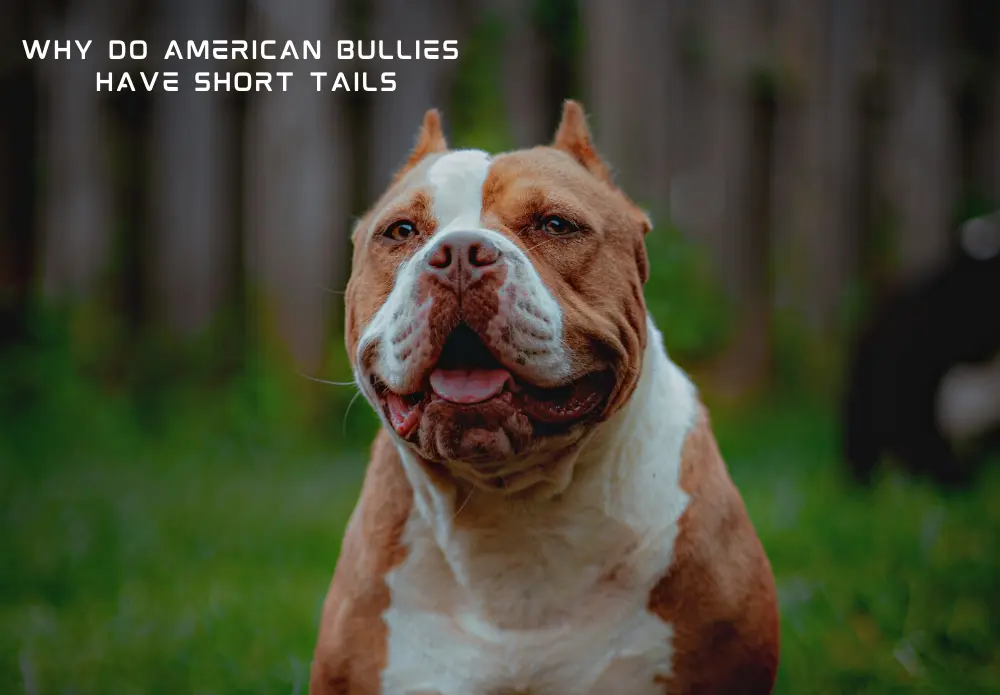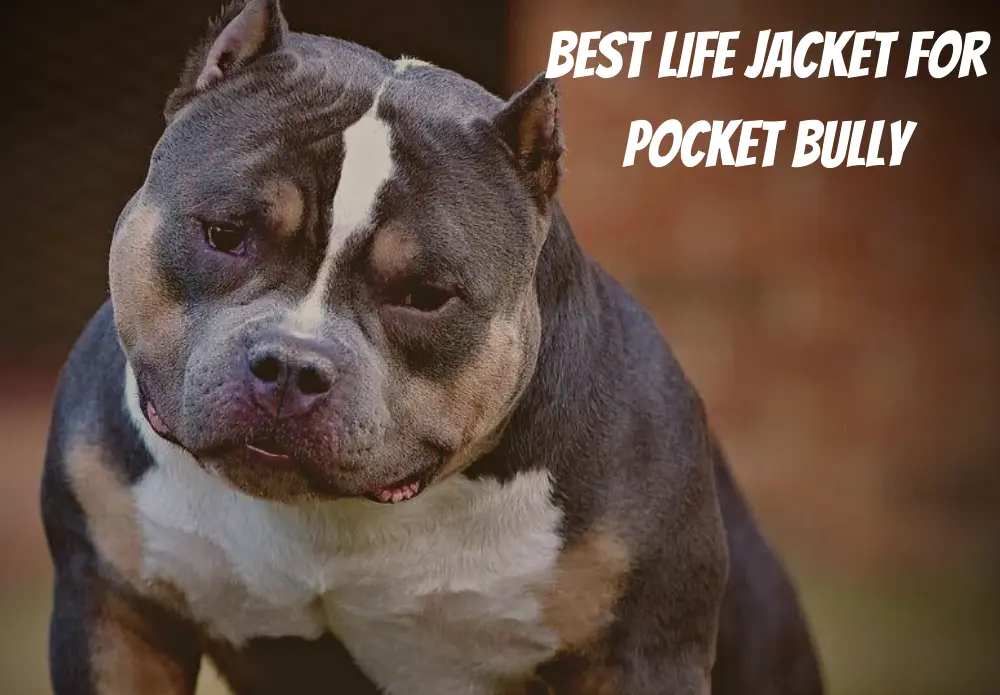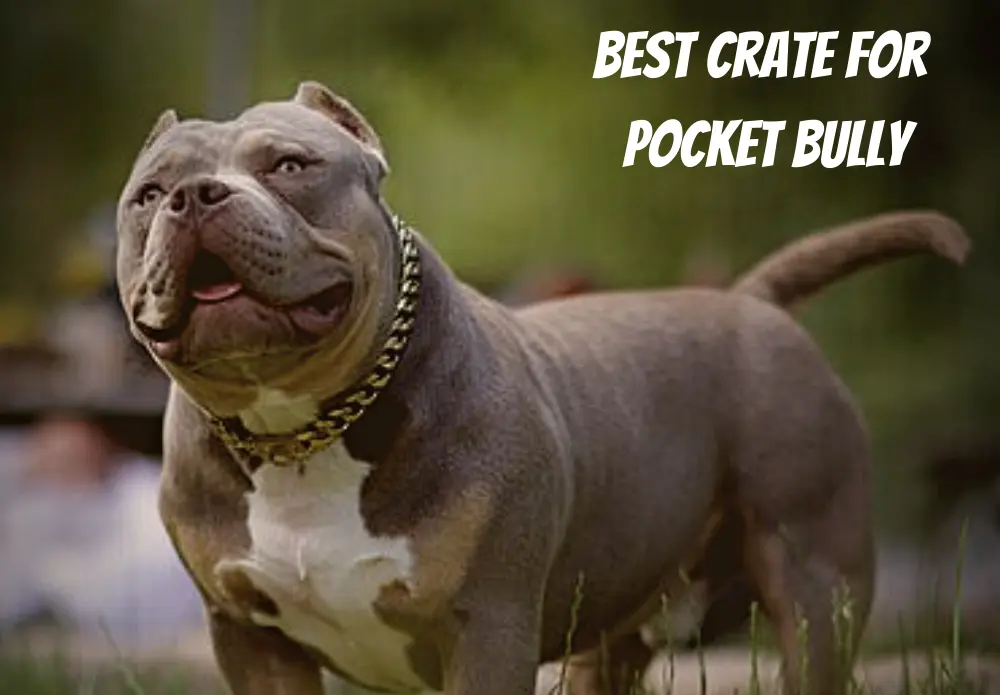American Bully is a new breed gaining popularity rapidly worldwide. People love to breed American Bullies as designer dogs and want them to be perfect.
However, finding dogs with short tails is not irregular; some prefer those that fit the criteria set by international registries.
This article will confer how to ensure you are breeding long-tailed American Bullies, the reasons why some of them have short tails, and their potential effects on the dogs’ health.
What is the Standard Tail Length of American Bullies?
American Bullis display numerous physical differences, even among those of the same litter. As a result, many associations worldwide created an authorized registry that defines distinct dog breeds’ admissible and standard appearance.
According to the ABKC, the tail of an American Bully must be clear of curls, curves, and knots and long enough to reach the hocks. Extremely short tails, or those growing only up to one inch past the hock, are also considered defects.
A pup’s tail length is only a matter of choice and the owner’s objectives with the dog. If you own an American Bully because you adore the breed’s character and believe the dog is a part of your family, its tail length shouldn’t be an issue.
But suppose you want to compete in dog shows or become a breeder of premium pedigree puppies. In that case, it may pose difficulties since the ABKC disqualified American Bullies with short tails.
Reasons Why Some American Bullies Have Short Tails
Biological and artificial reasons contribute to the American Bullies’ tail length and appearance. While some are beyond our control, some result from owners’ judgments to protect the dog or avert life-threatening situations.
1. Genetic Factors
Some associations recognize American Bullies as a fresh breed. But they originally originated from the American Pitbull Terrier, which has genetic elements from other animals, such as the English Bulldog. Some English Bulldogs tend to have short tails.
The natural bobtail (NBT) mutation happens in many breeds of dogs. Bullies that receive the mutant gene from one of their parents (i.e., NBT maternal gene and normal tail paternal gene) would inherently have a pruned or short tail as it is a distinguishing characteristic.
The presence of two specific recessive alleles causes a long tail; therefore even if both parents have short tails, some of their pups may have long tails. The puppies in the litter will have long tails if both parents have them.
The dog is not harmed by having a short tail because of heredity per se; they can live as regularly and contentedly as their long-tailed siblings. But organizations like the UKC and ABKC forbid them from participating in verification activities.
Dogs that inherit the attribute from both parents (NBT maternal gene and NBT paternal gene) will probably die in the womb because a study found that pure or homozygous natural bobtail (NBT) genes are deadly in the uterus.
Puppies that outlive the uterus and are born someday die from other health intricacies. Few studies explain why dogs with the homozygous NBT gene fail to survive into adulthood.
2. Breeding Practices
Puppies born from a momma dog who sustained some wounds while pregnant may suffer from tail malformation. In some cases, if many embryos are in a litter, the uterus’s congestion may also result in some puppies having physical defects.
Depending on the extent of the injury or the degree of crowding impacted, puppies may have short, kinked, or twisted tails.
As the puppies become older, it may also be possible for them to have leg or pacing issues. However, in many circumstances, there are no other physical issues.
In addition to injuries or overcrowding, other potential causes of hereditary disabilities impacting puppies are nutritional deficit during the early stages of growth and the mother dog’s stress or exposure to toxic chemicals during pregnancy.
A study also revealed that some dog breeds underwent congenital vertebral malformations that led to tail deformations despite being neurologically healthy.
The study included English Bulldogs, among the American Bully’s progenitors. In multiple cases of congenital tail deformations, dogs can live normally.
Some of them may even be rectifiable if discovered early on. For example, regular massages and exercises may help neaten kinks in the tails of puppies less than six months old.
However, if the deformation causes movement difficulties or health risks, conferring with a vet for possible therapy or medical intervention may be essential. Some vets may even recommend tail amputation.
3. Docking or Cutting
While it is deemed illegal in many countries, docking is permitted and widely practiced in the USA. Dog owners who dock their dogs’ tails do so to avert injury, especially on working dogs whose long tails may pose hazards and restrict them from fulfilling their tasks.
Some individuals also dock dogs’ tails for aesthetic objectives or due to a historical faith that it can deter rabies. Numerous countries have already outlawed docking because inadequate scientific evidence supports or justifies these beliefs.
However, a medical process that requires amputation due to a debilitating tail deformation or injury is not docking. A Schwarzman Animal Medical Center vet recommends tail amputation in cases where the alternative’s surgical outcomes may prove too risky.
FAQs – Frequently Asked Questions
Do American Bullies Get Their Tails Docked?
American Bullies get their tails docked to get rid of a kinky tail. Sometimes the tail is too long, which could hinder the Bully and needs docking. It is a fairly common practice, but only a professional veterinarian should perform it.
What Happens if A Dog’s Tail Is Docked Too Short?
If a dog’s tail is docked too short, it can cause extreme pain and rectal prolapse. Both cases are very discomforting to the dog, so docking should only be done under anesthesia by a vet and only be done if necessary.
What Are 2 Issues with Tail Docking Too Short?
Animal welfare groups raise several issues with tail docking. The 2 main issues of tail docking are that it is unnecessary and inhumane.
Cutting the tail of an American Bully too short can cause extreme pain, bacterial infection, nerve damage, and rectal collapse. For these reasons, you should only dock the tail of your Bully if it’s crucial and recommended by the vet for medical reasons.
Conclusion
As they say, don’t judge a book by its cover, the same goes here too. The length and shape of the tail of an American Bully should not matter to you if you love him. Unless you want to become a professional breeder, you don’t have to worry about the size and shape of your Bully’s tail.
If you happen to become a breeder, you should understand the pedigree of an American Bully before you buy and breed puppies. Be sure that the genes are all ok for the result you are trying to achieve.
It does not matter if your Bully has a short tail or a long tail; what matters is that American Bullies are fun to have as a pet no matter what.






